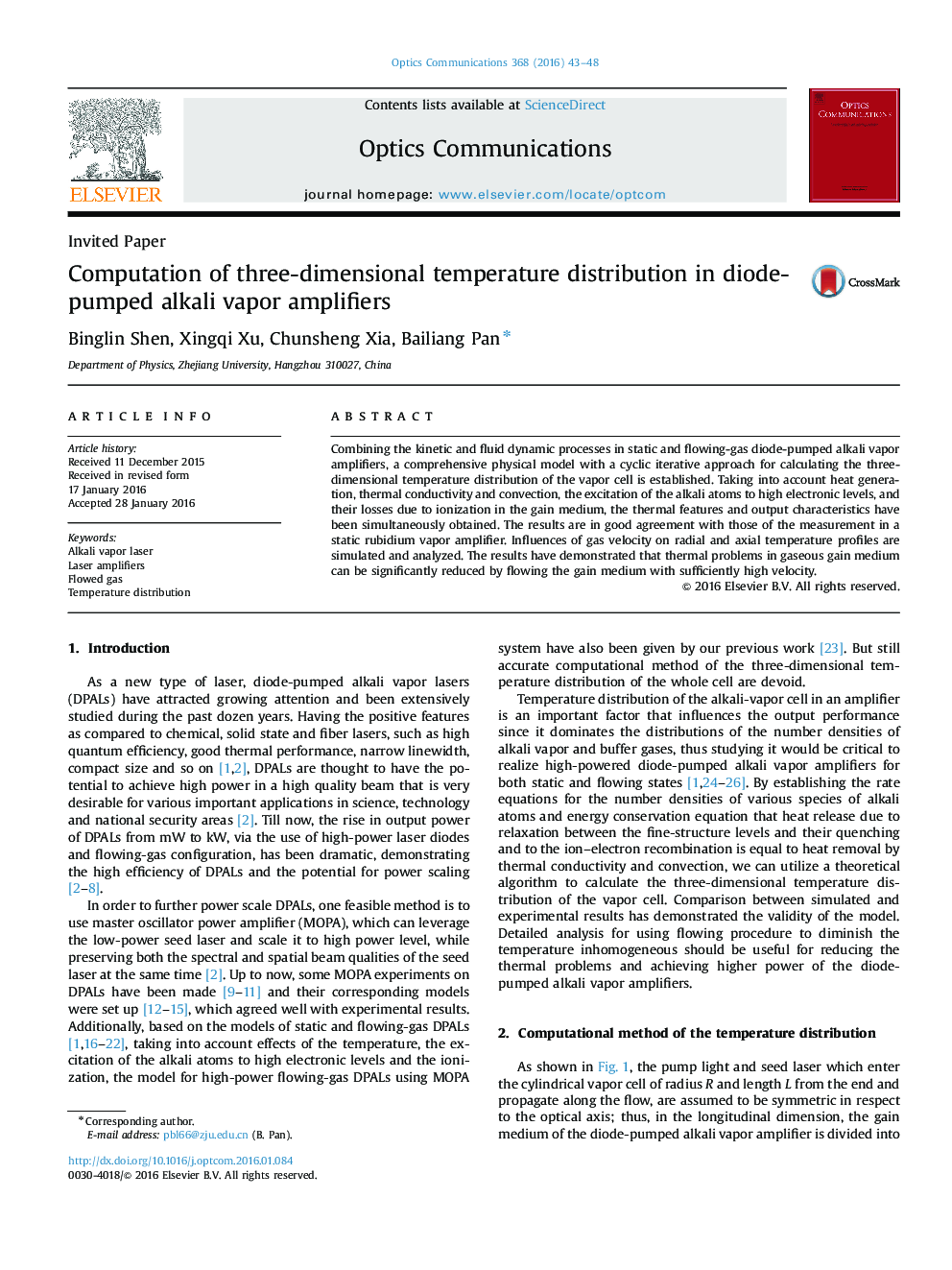| Article ID | Journal | Published Year | Pages | File Type |
|---|---|---|---|---|
| 7928337 | Optics Communications | 2016 | 6 Pages |
Abstract
Combining the kinetic and fluid dynamic processes in static and flowing-gas diode-pumped alkali vapor amplifiers, a comprehensive physical model with a cyclic iterative approach for calculating the three-dimensional temperature distribution of the vapor cell is established. Taking into account heat generation, thermal conductivity and convection, the excitation of the alkali atoms to high electronic levels, and their losses due to ionization in the gain medium, the thermal features and output characteristics have been simultaneously obtained. The results are in good agreement with those of the measurement in a static rubidium vapor amplifier. Influences of gas velocity on radial and axial temperature profiles are simulated and analyzed. The results have demonstrated that thermal problems in gaseous gain medium can be significantly reduced by flowing the gain medium with sufficiently high velocity.
Related Topics
Physical Sciences and Engineering
Materials Science
Electronic, Optical and Magnetic Materials
Authors
Binglin Shen, Xingqi Xu, Chunsheng Xia, Bailiang Pan,
